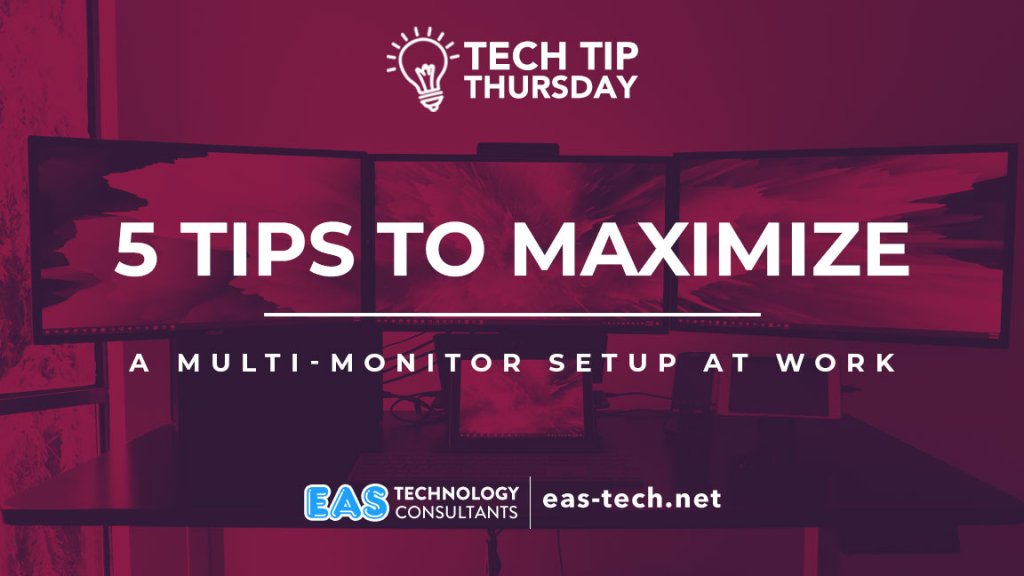
In today’s fast-paced work environment, efficiency and productivity are key to success. One tool that can significantly enhance your productivity is a multi-monitor setup. By extending your workspace across multiple screens, you can streamline your workflow, multitask more effectively, and achieve better results. However, to fully reap the benefits of a multi-monitor setup, you need to know how to use it efficiently. Here are five handy tips to help you maximize your multi-monitor setup at work.
- Plan Your Workspace Layout:
The first step in maximizing your multi-monitor setup is to carefully plan your workspace layout. Consider the physical arrangement of your monitors and how they fit on your desk. Ideally, you should arrange them in a way that minimizes neck strain and maximizes your field of view. A common setup is to place one monitor in the center as your primary display and the others on either side, forming a gentle curve. This arrangement allows you to have a central focus while still having peripheral information readily accessible.
- Organize Your Desktop:
An organized desktop is crucial for maintaining productivity when using multiple monitors. Create dedicated spaces for specific tasks or applications on each screen. For example, you can have your email client open on one monitor, your web browser on another, and your main project or document on the center screen. This way, you can switch between tasks seamlessly without cluttering your workspace.
- Use Taskbars and Virtual Desktops:
Taskbars are a handy feature that helps you keep track of open applications on each monitor. Configure your taskbar settings to display only the apps running on the specific screen. This way, you won’t waste time searching for the right window. Additionally, many operating systems, like Windows 10 and macOS, offer virtual desktops. These allow you to create multiple desktops with different sets of applications and windows. Utilizing virtual desktops can further enhance your multitasking capabilities, especially if you have numerous applications to manage.
- Customize Hotkeys and Shortcuts:
Customizing hotkeys and shortcuts can save you a lot of time and effort when working with multiple monitors. Most operating systems allow you to assign specific shortcuts for actions like moving windows between screens, snapping windows to the edges of screens, or activating virtual desktops. Take the time to set up these shortcuts according to your preferences and needs. It may take some time to get used to them, but the payoff in increased productivity is well worth it.
- Invest in the Right Hardware:
To truly maximize the potential of your multi-monitor setup, ensure you have the right hardware. This includes powerful graphics cards that can handle the increased workload of multiple displays, as well as high-quality monitors with consistent color calibration. Additionally, consider investing in an ergonomic desk and chair setup to reduce strain during extended work sessions. Adequate cable management can also help maintain a clean and organized workspace.
A multi-monitor setup can be a game-changer for your productivity at work, but only if you use it effectively. By carefully planning your workspace layout, organizing your desktop, utilizing taskbars and virtual desktops, customizing hotkeys and shortcuts, and investing in the right hardware, you can make the most of your multi-monitor setup and take your productivity to new heights. So, go ahead and optimize your workspace to work smarter, not harder.
